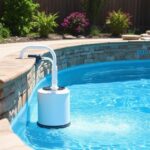Introduction to Moaning Noise
The moaning noise is a common phenomenon that can occur in various contexts, from household appliances to natural environments, and even in biological or mechanical systems. While sometimes innocuous, a moaning sound can also signal underlying issues that require attention. This article explores the origins of moaning noises, their significance in different settings, common causes, and potential solutions to address them.
What Is a Moaning Noise?
A moaning noise is characterized by a sustained, low-pitched, sometimes mournful sound that often resembles a prolonged wail or sigh. It is generally soft but audible enough to attract attention. The tone and duration can vary depending on the source, environment, and factors involved. Unlike sudden or loud noises, moaning sounds tend to be continuous or periodic, often carrying an eerie or unsettling quality.
Common Contexts and Significance
Moaning noises are encountered across various domains, each with its own implications:
- Natural Environment: Wind flowing through trees or over structures can produce moaning sounds, especially during storms or high wind conditions.
- Mechanical and Electrical Devices: Machines, pipes, or ventilation systems may emit moaning noises due to vibrations, wear, or improper operation.
- Buildings and Structures: Structural elements like settling foundations, expanding or contracting materials, or loose components can generate moaning sounds.
- Biological and Human Contexts: People or animals may produce moaning sounds as expressions of pain, discomfort, or emotional distress.
Understanding the context is crucial for determining whether a moaning noise is benign or indicative of a problem that needs to be addressed.
Common Causes of Moaning Noises
- Wind and Atmospheric Conditions:
One of the most natural causes of a moaning sound is wind passing through narrow openings, gaps, or around obstructions. This aerodynamic effect can create a whistling or moaning noise, especially noticeable during storms or gusty weather. - Mechanical Vibrations and Resonance:
Mechanical equipment such as fans, pumps, or HVAC systems can develop moaning sounds due to worn bearings, misaligned components, or resonance effects. Over time, these sounds can intensify and signal the need for maintenance. - Pipes and Plumbing:
Water flow through pipes, especially under high pressure or with air pockets, can cause vibrations that produce moaning or squealing noises. These sounds often indicate issues like water hammer, blockages, or leaks. - Structural Movements:
Buildings and bridges naturally expand and contract due to temperature changes. Sometimes, these movements produce creaking or moaning sounds, which are generally harmless. However, persistent or unusual sounds may indicate structural stress or damage. - Animal and Human Sounds:
Moaning is also a vocalization used by humans and animals. In humans, it can be an expression of pain, pleasure, or emotional distress. In animals, such as dogs or cats, it can signal discomfort, anxiety, or communication. - Age and Deterioration:
Over time, aging materials and components may develop cracks, loose fittings, or wear, leading to moaning sounds. For example, old wooden floors or settling foundations can produce such noises.
Diagnosing Moaning Noises
Identifying the source of a moaning noise involves attentive observation:
- Location: Is the sound coming from a specific area, like a pipe, wall, or appliance?
- Timing: Does it occur at certain times, such as during windstorms, when machinery operates, or at night?
- Frequency: Is the noise continuous, periodic, or sporadic?
- Associated Symptoms: Are there other signs, such as leaks, vibrations, or structural shifts?
By answering these questions, one can narrow down the potential causes and determine whether professional inspection or simple adjustments are needed.
Addressing and Preventing Moaning Noises
Depending on the source, solutions can range from straightforward to complex:
- Sealing Gaps and Openings:
For wind-induced noises, sealing gaps around windows, doors, or vents can significantly reduce the sound. - Maintenance of Mechanical Systems:
Regular inspection and lubrication of moving parts in appliances and HVAC units can prevent or reduce moaning sounds caused by wear. - Pipe Insulation and Repair:
Insulating noisy pipes and fixing leaks or blockages can eliminate squealing or moaning caused by water flow issues. - Structural Reinforcement:
If the noise results from structural movement, consulting engineers for assessment and reinforcement measures may be necessary. - Humane and Medical Attention:
When moaning is vocalized by humans or animals, understanding the context is essential. Medical evaluation or behavioral consultation might be required if pain or distress is involved.
When to Seek Professional Help
While some causes of moaning noises are minor and easily addressed, others might indicate serious issues:
- Persistent, loud, or unexplained moaning sounds that do not resolve after simple measures should be examined by professionals.
- Structural noises linked with cracking or shifting could compromise safety.
- Biological causes requiring medical or veterinary attention should not be ignored.
Conclusion
The moaning noise, while often subtle, can be an important indicator of environmental, mechanical, structural, or biological conditions. Recognizing the source and understanding its significance can help prevent potential damage or address underlying health issues. Whether it’s sealing a draft, maintaining machinery, or seeking medical advice, proactive measures ensure safety, comfort, and peace of mind.
In essence, paying attention to moaning sounds and responding appropriately can help maintain the harmony and safety of both our environments and ourselves.



